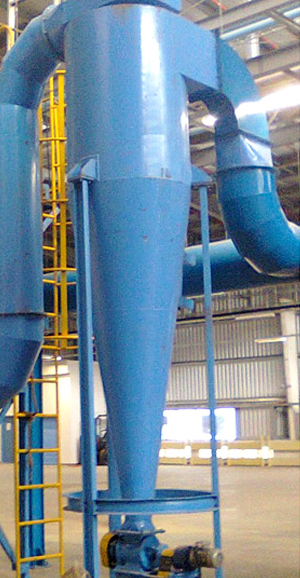Cyclones or Multiclone are also known as Mechanical dust collectors, used extensively to separate large particles from a flue gas stream. Cyclone Separators are particulate control devices that use centrifugal force, gravity settling, and inertia to collect pollutants. Mechanical collectors can handle high dust loadings.
In cyclone separators, cyclonic separation method of removing particulates is used. Rotational effects and gravity are used to separate mixtures of solids and fluids. Cyclonic separation is a method of removing particulates from an air, gas or liquid stream, without the use of filters, through vortex separation method. The method can also be used to separate fine droplets of liquid from a gaseous stream. A high speed rotating air flow is established within a cylindrical or conical container called a cyclone. Air flows in a helical pattern, starting from the top wide end of the cyclone and ending at the bottom narrow end then the air stream moves in a straight path through the center of the cyclone and comes out from the top. Larger particles in the rotating stream have too much inertia to follow the tight curve of the stream, due to this they strike the outside wall, and then fall to the bottom of the cyclone from where they can be removed easily.
Cyclone Separator is most effective on coarse particles size 20 microns and above. However, for fine particles and less than 20 microns size, the collection efficiency drops considerably below 80 %.





























